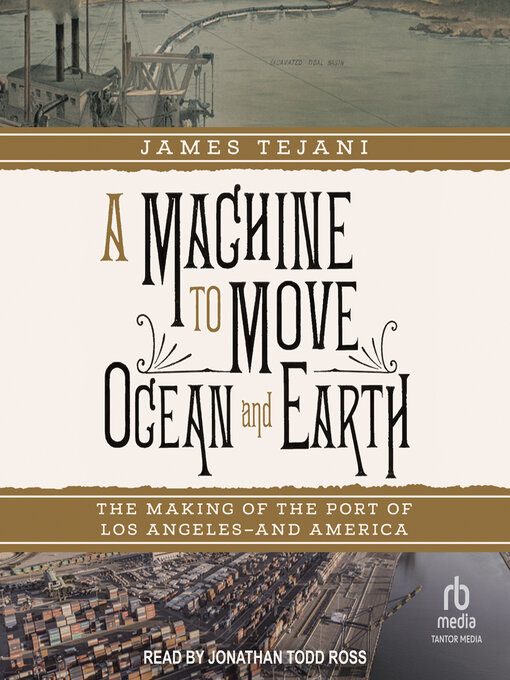- Popular Magazines
- Just Added
- Cooking & Food
- Fashion
- Health & Fitness
- Home & Garden
- News & Politics
- See all magazines collections
A Machine to Move Ocean and Earth
The Making of the Port of Los Angeles and America
By the mid-nineteenth century, Americans had identified the West Coast as the republic's destiny, a gateway to the riches of the Pacific. Tejani demonstrates how San Pedro came to be seen as all-important to the nation's future. It was not virgin land, but dominated by powerful Mexican estates that would not be dislodged easily. Yet American scientists would wrest control of the estuary and set the scene for the violence, inequality, and engineering marvels to come.
San Pedro was no place for a harbor, Tejani reveals. The port was carved in defiance of nature, using new engineering techniques and massive mechanical dredgers. Tejani vividly describes how a wild coast was made into the engine of American power. A Machine to Move Ocean and Earth is must-listen for anyone who seeks to understand what the United States was, what it is now, and what it will be.
-
Creators
-
Publisher
-
Release date
July 23, 2024 -
Formats
-
OverDrive Listen audiobook
- ISBN: 9798855556216
- File size: 373143 KB
- Duration: 12:57:22
-
-
Languages
- English
-
Reviews
-
Publisher's Weekly
Starred review from May 20, 2024
The decision to build a port in Los Angeles’s San Pedro Bay was driven by commercial interests, local and national politics, and personal agendas, not by thoughtful analysis of geography and geology, according to this enthralling debut. Historian Tejani documents the mid-19th-century political maneuvering and “machines of the modern state and corporate capital” that heedlessly “tore apart” 3,400 acres of mud and salt marsh, which engineers at the time considered wholly unsuitable for a commercial harbor. But others—among them landowners, surveyors, railroad magnates, shipping merchants, and U.S. senators—saw opportunities to get rich via land speculation, lucrative government contracts, and monopolistic port access. Tejani’s narrative revolves around these men and the conflict, competition, and deception involved in their ambitious decades-long efforts to get the port built, which unfurled in parallel with America’s westward expansion and displacement of Native peoples and the acquisition of Mexican territory by force. Powerful players massaged government policy on these and other issues in the direction most beneficial to the port, which subsequently became central to U.S. imperial aspirations in the Pacific. Tejani astutely conveys the deep entanglement of political and economic interests at the highest echelons of power. The result is a beguiling history of Southern California, early industrial development, and U.S. empire.
-
Loading
Why is availability limited?
×Availability can change throughout the month based on the library's budget. You can still place a hold on the title, and your hold will be automatically filled as soon as the title is available again.
The Kindle Book format for this title is not supported on:
×Read-along ebook
×The OverDrive Read format of this ebook has professional narration that plays while you read in your browser. Learn more here.

